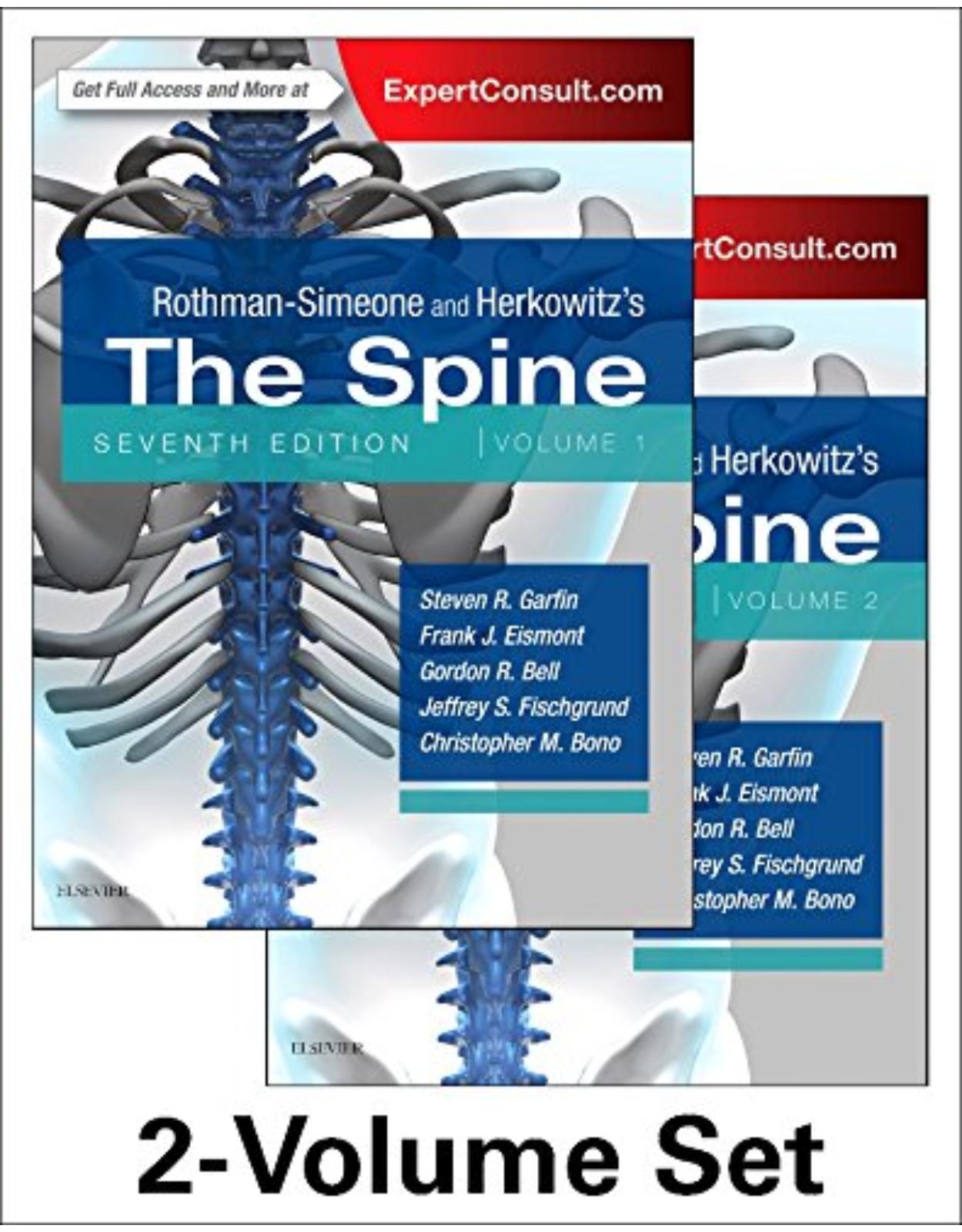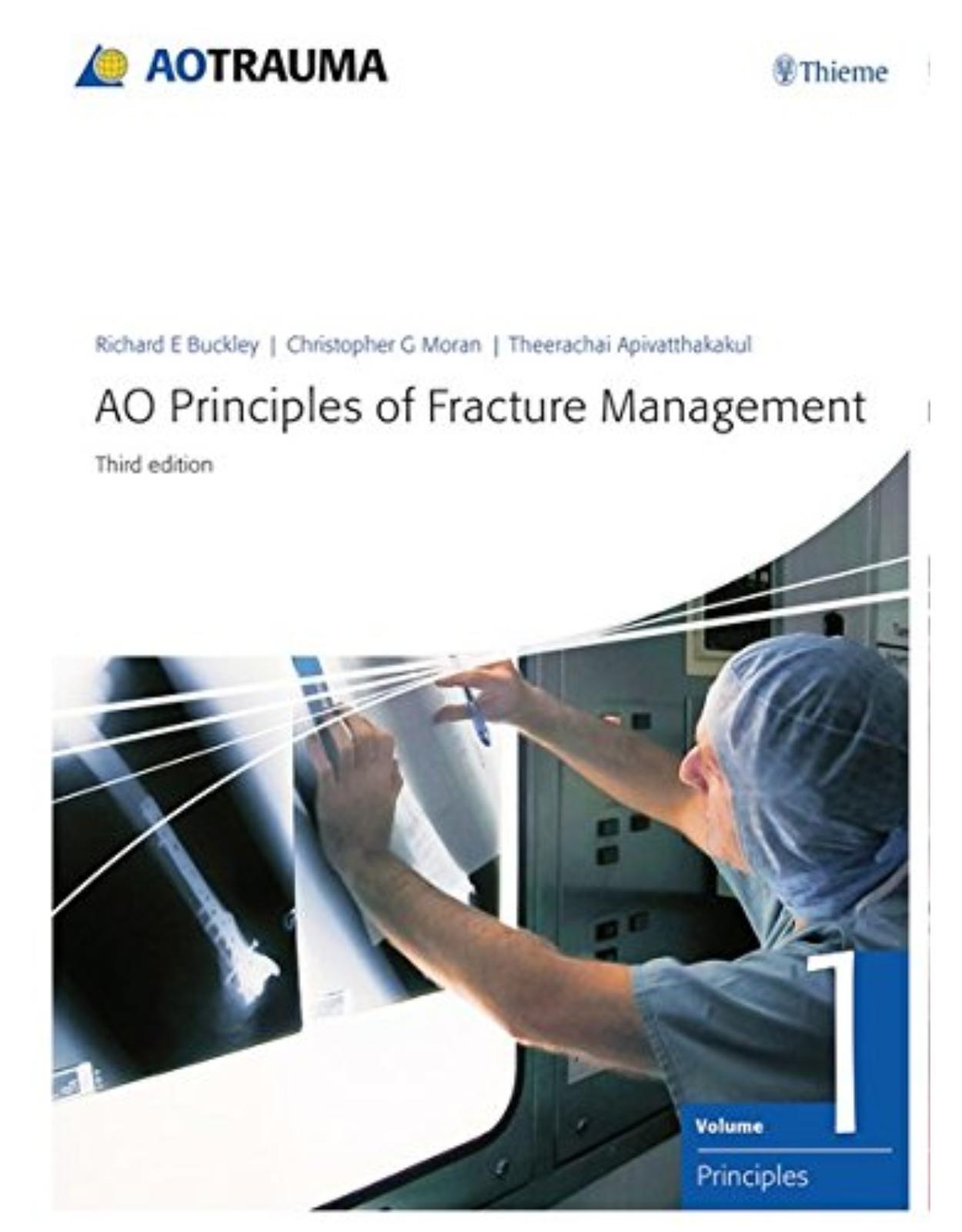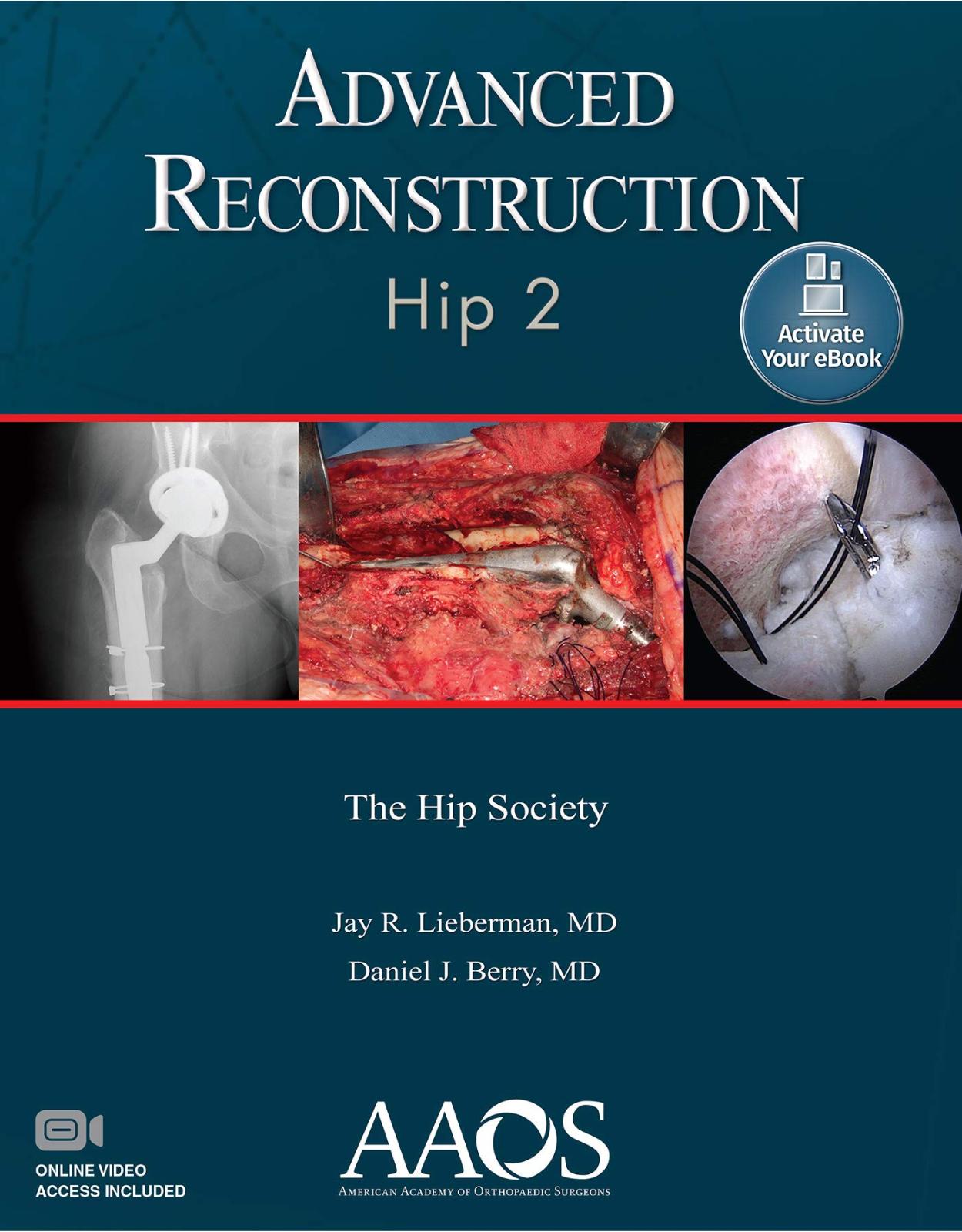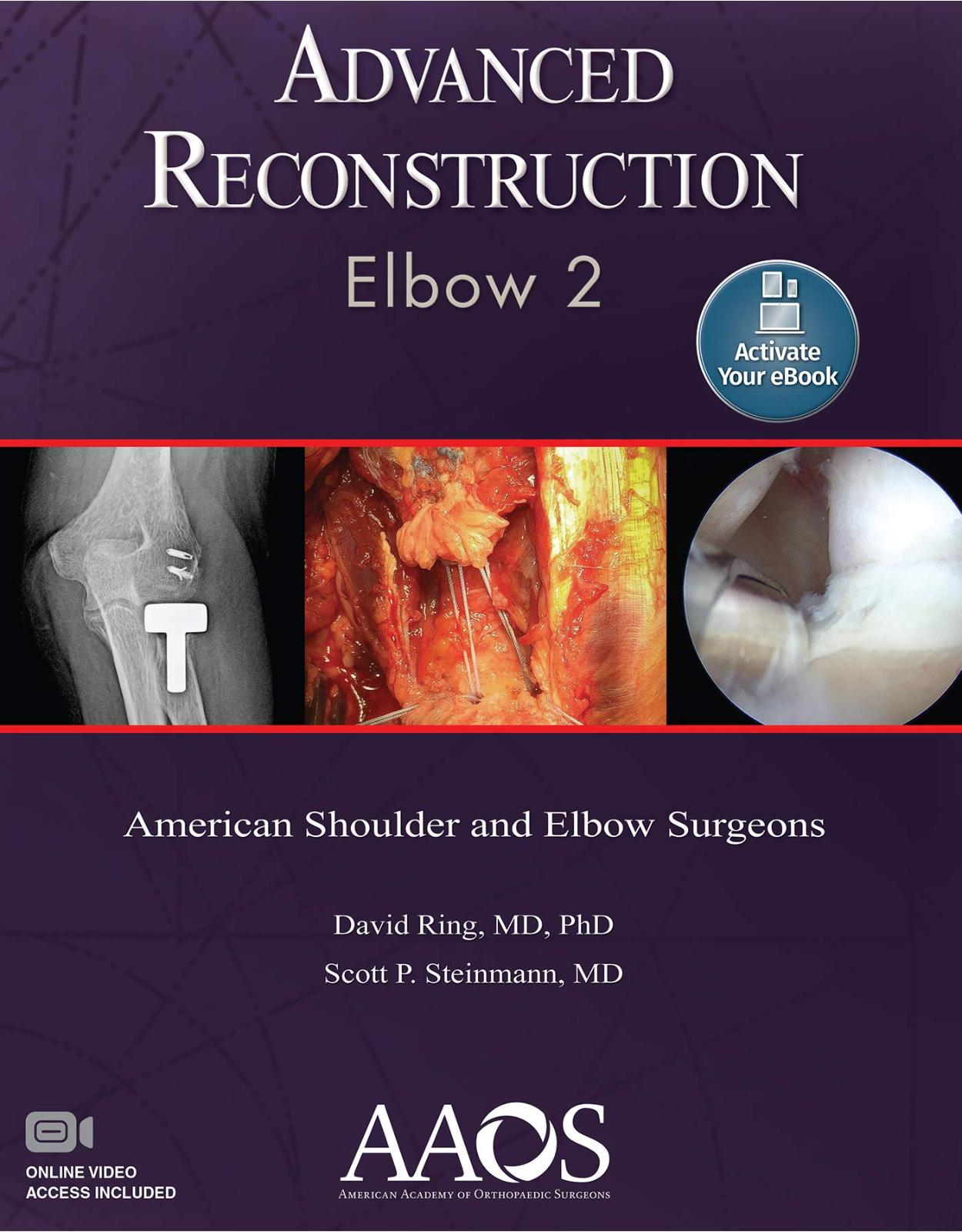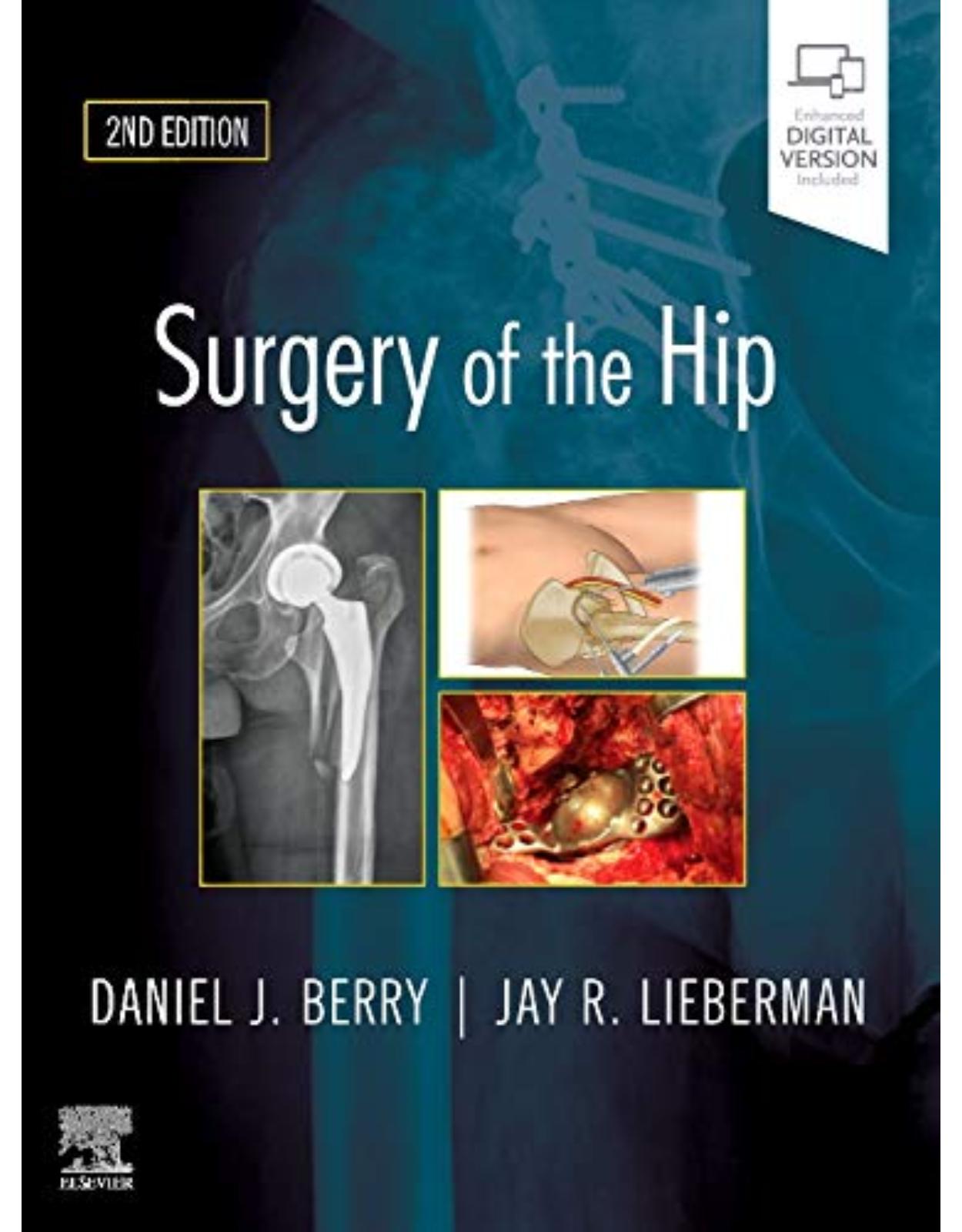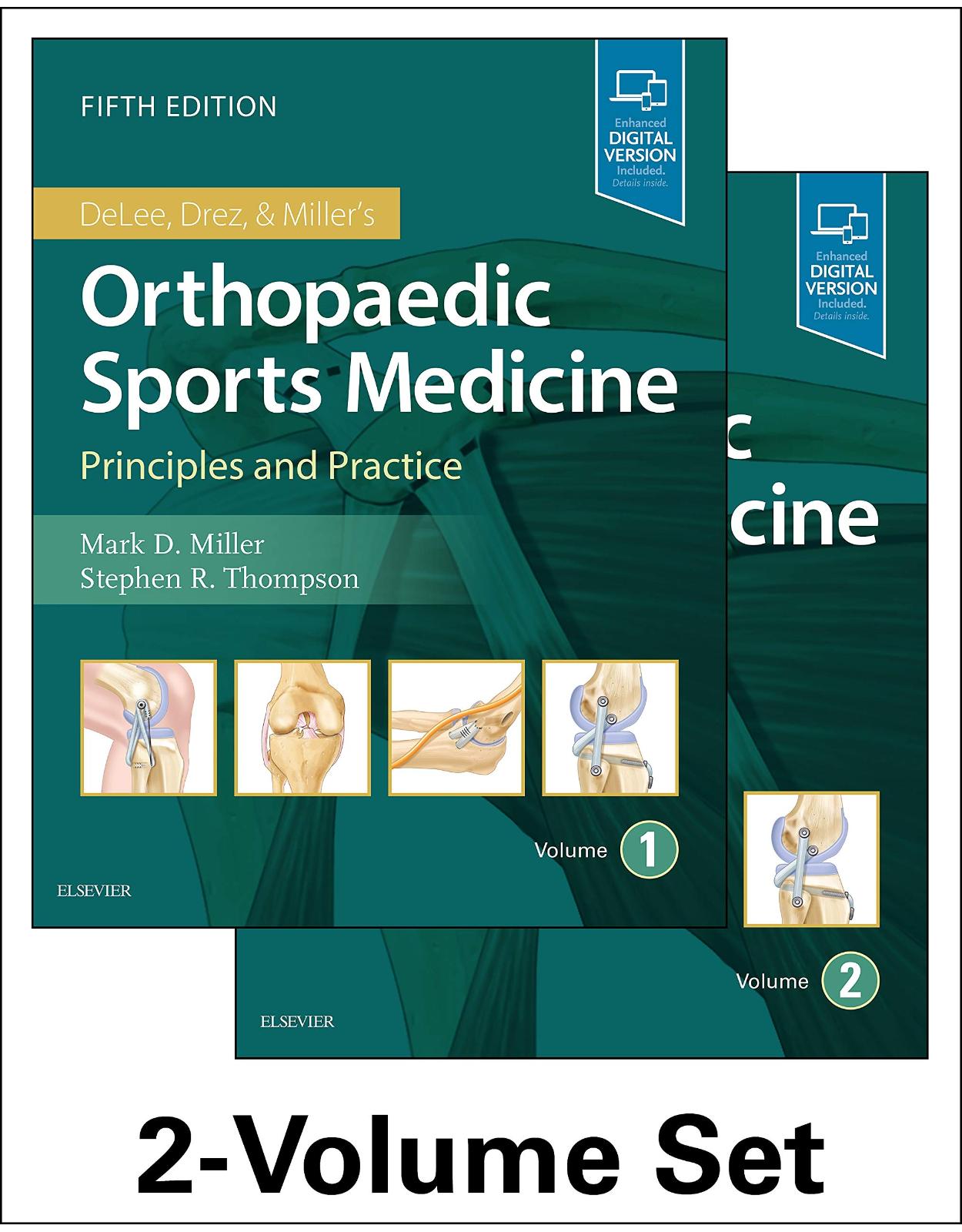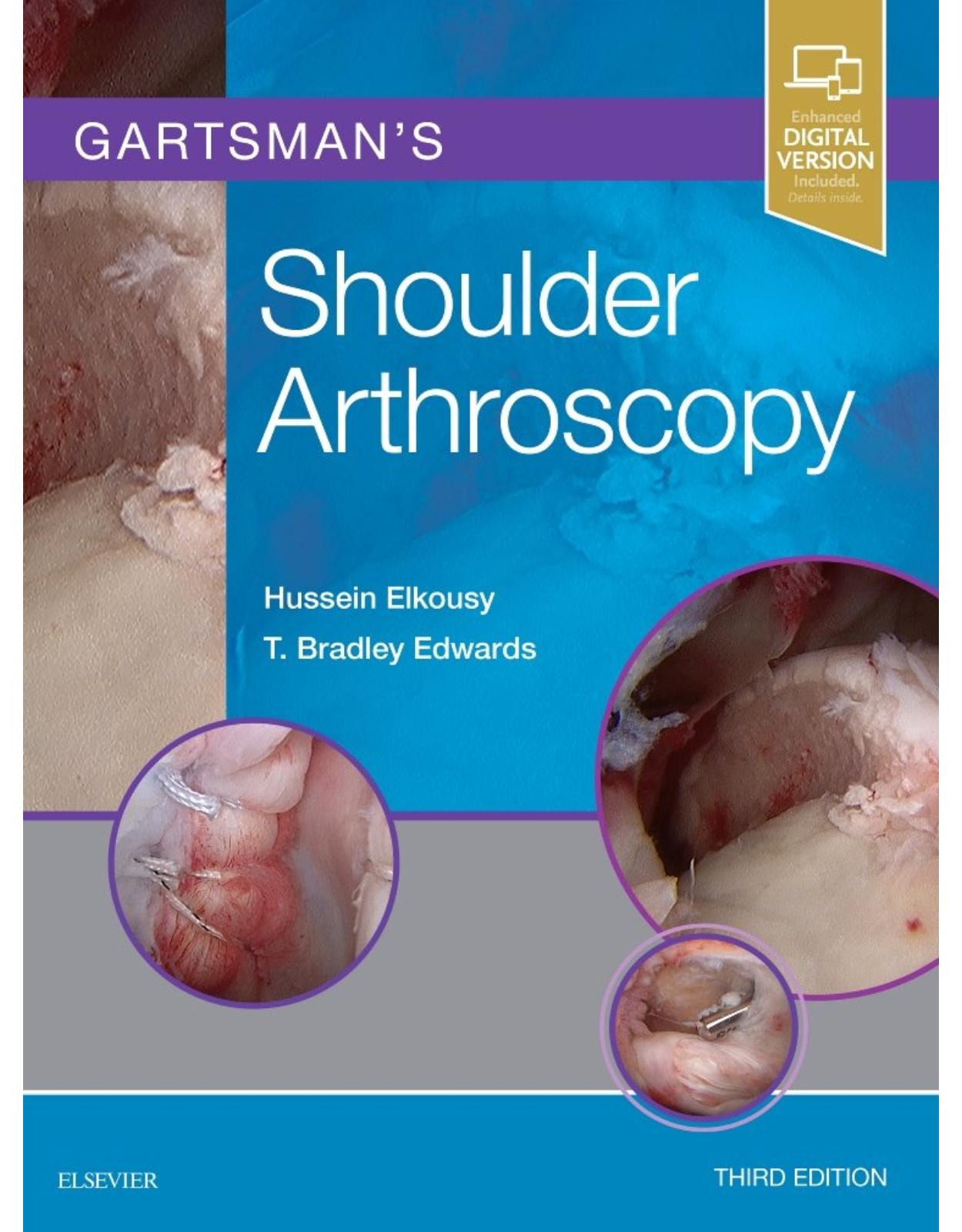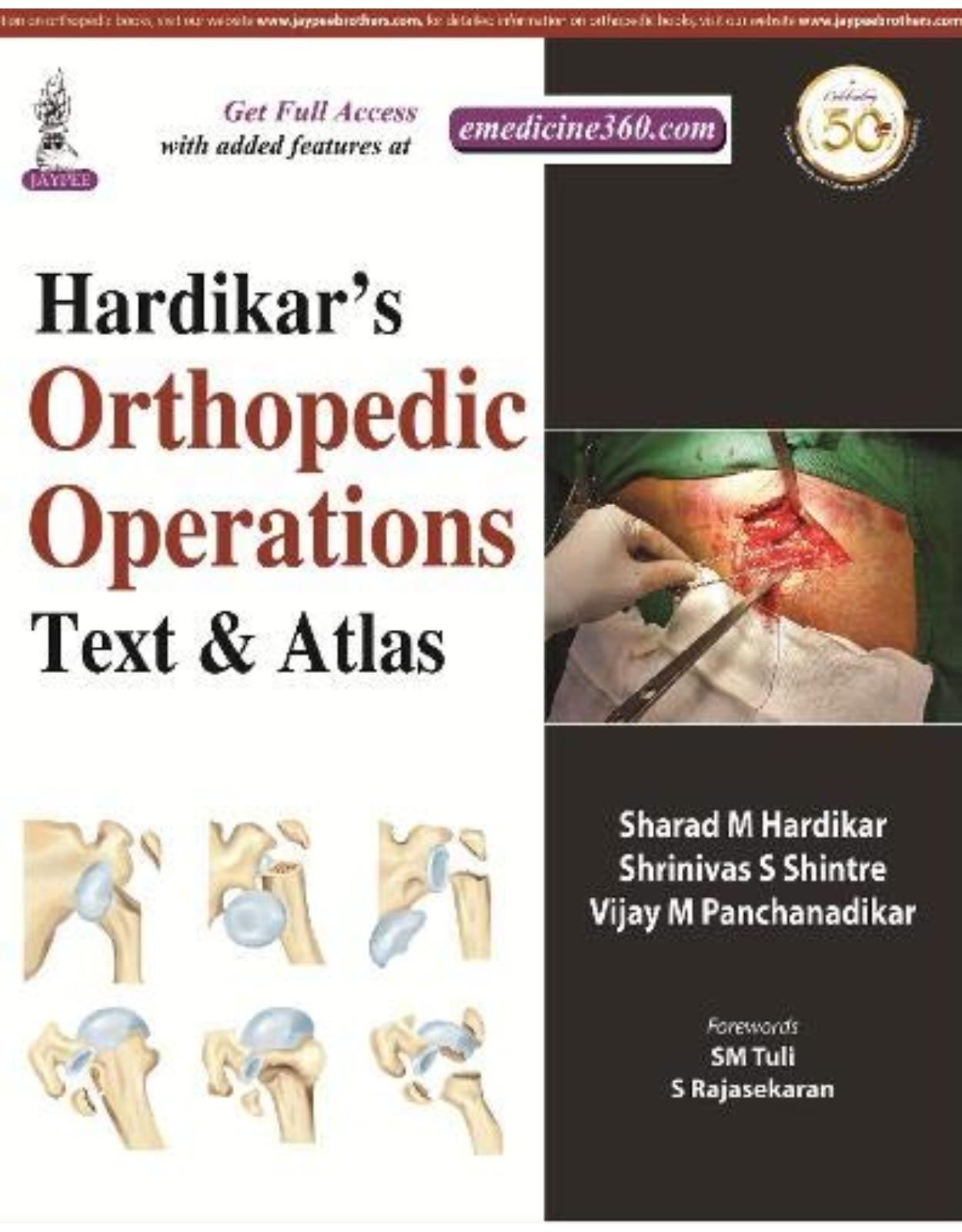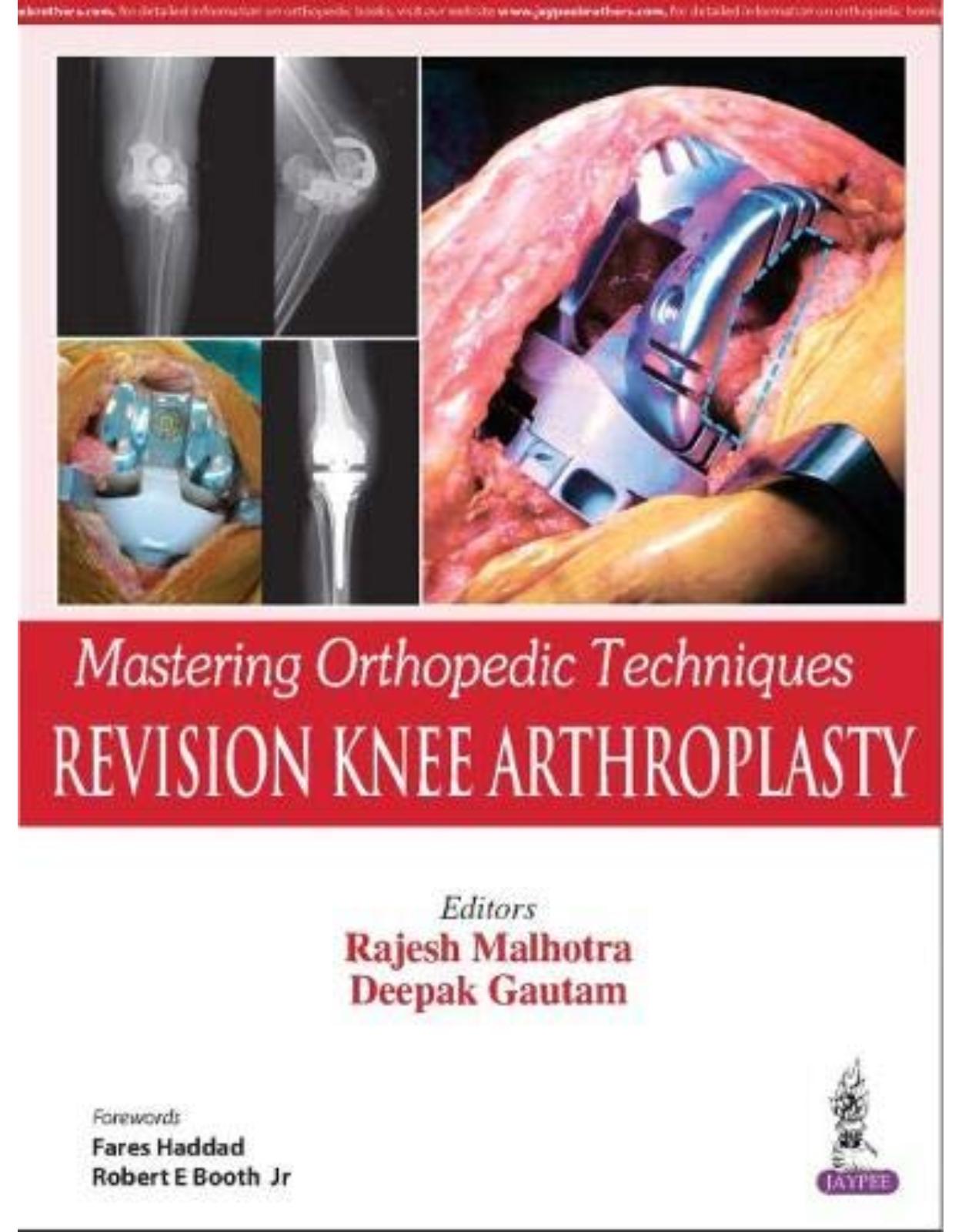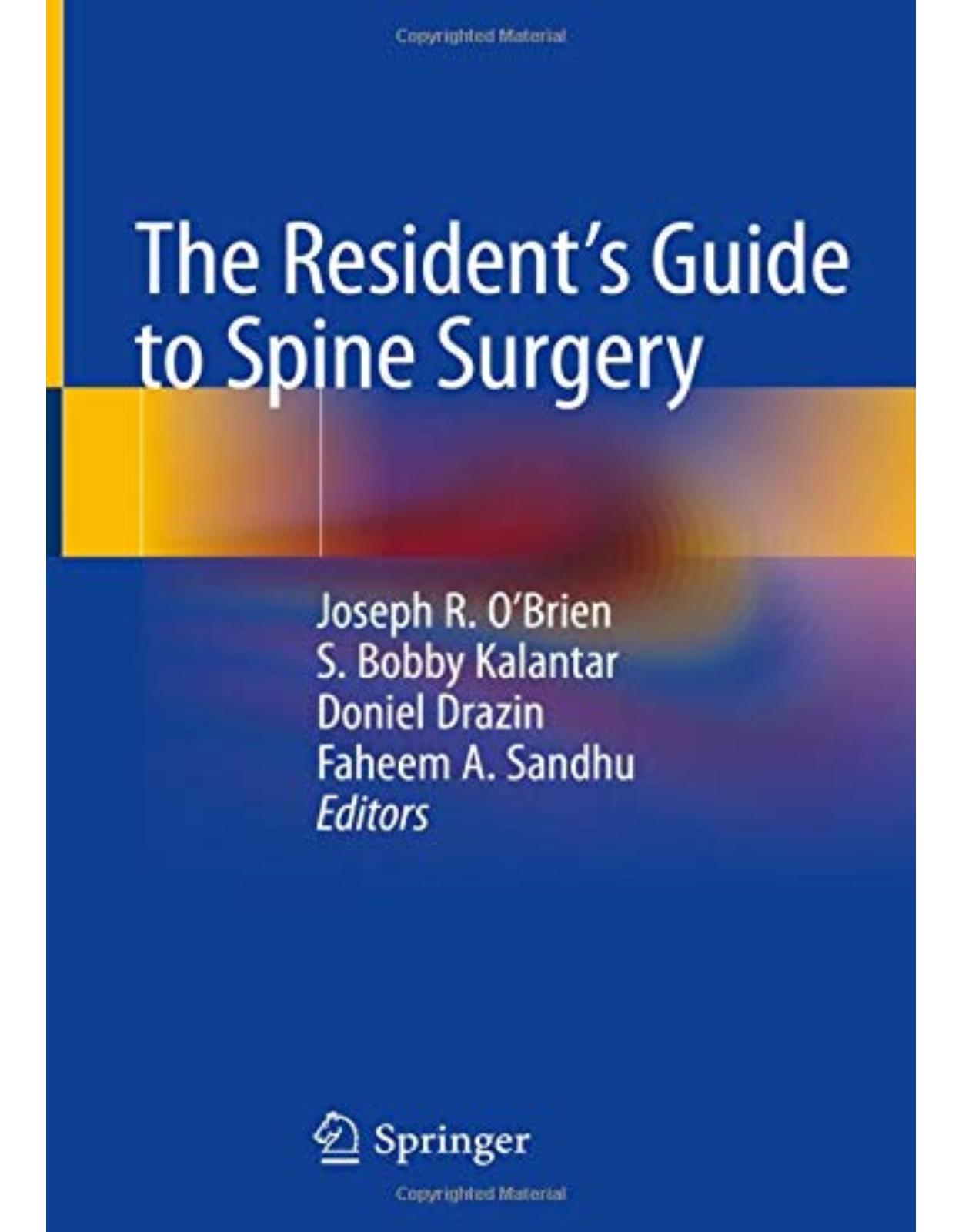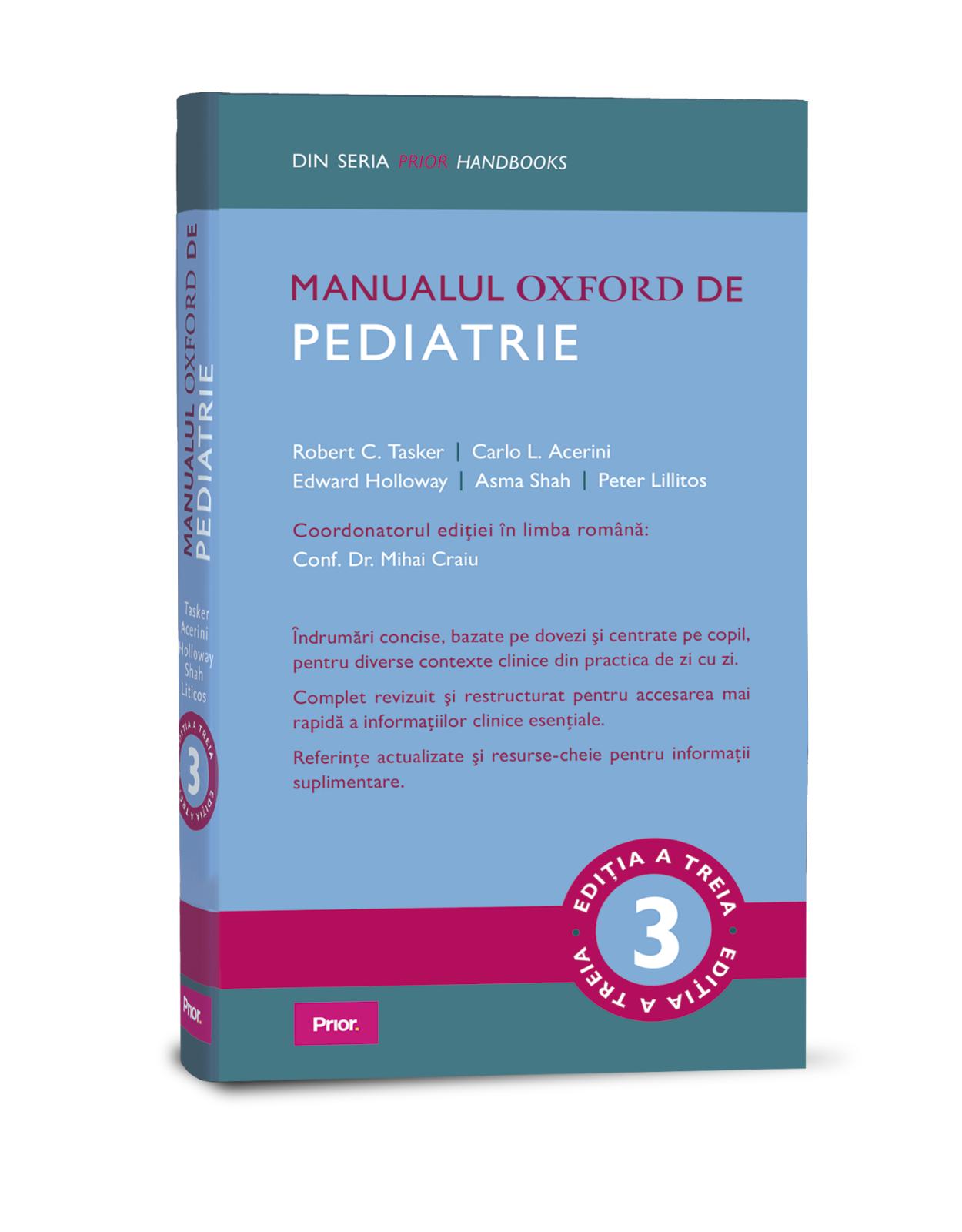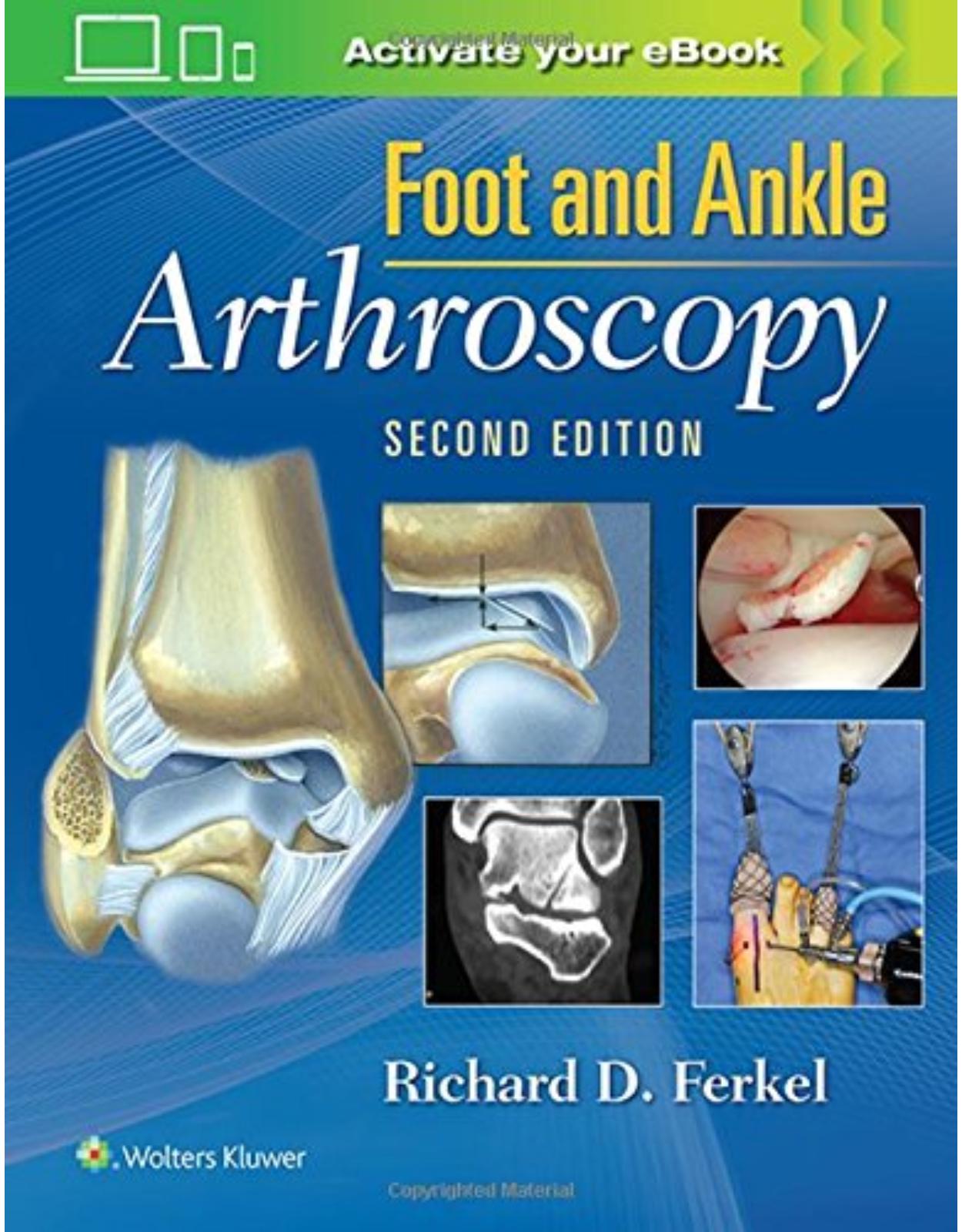
Foot & Ankle Arthroscopy, 2e
Livrare gratis la comenzi peste 500 RON. Pentru celelalte comenzi livrarea este 20 RON.
Disponibilitate: La comanda in aproximativ 4 saptamani
Autor: Richard D Ferkel
Editura: LWW
Limba: Engleza
Nr. pagini: 592
Coperta: Hardback
Dimensiuni: 1.3 x 22.9 x 27.9 cm
An aparitie: 2013
Description:
In vivid, step-by-step illustrative detail, Foot and Ankle Arthroscopy, Second Edition thoroughly describes arthroscopic techniques used in the surgical treatment of foot and ankle disorders. Now fully up-to-date, this edition details the advances that have affected the use of arthroscopy in foot and ankle surgery in recent years. The text covers both the basics of equipment, instrumentation and surgical anatomy, as well as the practical steps surgeons must take to optimize results for each procedure. Key Features:•Comprehensive, current coverage of the basics of ankle arthroscopy, instrumentation and anesthesia, surgical arthroscopy of the foot and ankle, rehabilitation, complications, future developments, and more.•New chapters include: Regional Anesthesia for Foot and Ankle Arthroscopy, Subtalar Joint Pathology, Prone Arthroscopy for Posterior Ankle and Subtalar Joint Pathology, Radiofrequency Use in Ankle and Foot Arthroscopy, Endoscopic Plantar Fascia Release, Gastrocnemius Recession and Intermetatarsal Nerve Decompression, and Endoscopic Procedures for Retrocalcaneal Bursitis, Achilles Tendon, Posterior Tibial Tendon, Peroneal Tendons and Flexor Hallucis Longus Tendon.•Clear, straightforward discussions cover the basics of surgical anatomy, while practical tips and pearls let you learn from master surgeons.•Abundant radiographs and color line drawings explain the techniques and make complex concepts easy to grasp.Now with the print edition, enjoy the bundled interactive eBook edition, which can be downloaded to your tablet and smartphone or accessed online and includes features like: •Complete content with enhanced navigation •Powerful search tools and smart navigation cross-links that pull results from content in the book, your notes, and even the web•Cross-linked pages, references, and more for easy navigation•Highlighting tool for easier reference of key content throughout the text•Ability to take and share notes with friends and colleagues•Quick reference tabbing to save your favorite content for future use
Table of Contents:
Section I: Basics of Ankle Arthroscopy
Chapter 1: Historical Developments
Chapter 1 Introduction
Figure 1-1
Figure 1-2
Figure 1-3
Figure 1-4
Figure 1-5
Figure 1-6
Figure 1-7
Figure 1-8
Figure 1-9
Figure 1-10
Figure 1-11
Figure 1-12
Figure 1-13
Figure 1-14
Figure 1-15
Figure 1-16
Figure 1-17
Table 1-1: Time Line of Arthroscopy
Figure 1-18
Figure 1-19
Figure 1-20
Figure 1-21
Figure 1-22: Ankle arthroscopy model.
Advantages and Disadvantages
Indications
Contraindications
Preferred Treatment
References
Suggested Reading
Chapter 2: Preoperative Evaluation and Imaging
Chapter 2 Introduction
Table 2-1: Diagnostic Testing of the Foot and Ankle
History
Physical Examination
Standing Examination
Seated Examination
Ankle
Range of Motion
Ligament Testing
Heel and Heel Cord
Subtalar Joint
Transverse Tarsal Joint
Metatarsophalangeal Joints
Referred Pain
Figure 2-1: Longitudinal arch.
Figure 2-2: Arch types.
Figure 2-3: Windlass mechanism.
Figure 2-4: “Malicious malalignment” syndrome.
Figure 2-5
Figure 2-6: Ankle range of motion.
Figure 2-7: Ankle excursion.
Figure 2-8: Ankle mortise incongruity.
Figure 2-9: Inversion stress test.
Figure 2-10: Anterior drawer test.
Figure 2-11
Figure 2-12
Figure 2-13: Plantar fasciitis.
Figure 2-14: Subtalar motion.
Figure 2-15: Posterior tibial tendon testing.
Figure 2-16
Figure 2-17: Dorsiflexion and plantar flexion of the great toe.
Figure 2-18
Radiologic Imaging
Routine Radiography
Hindfoot Alignment View
Stress Radiographs
Tomography
Fluoroscopy and Arthrography
Nuclear Medicine
Computed Tomography
Figure 2-19: Normal ankle x-rays.
Figure 2-20: Normal radiographic relationships that are important in evaluation of the tibiofibular articulation.
Figure 2-21: Normal foot x-rays.
Figure 2-22: Hindfoot alignment view.
Figure 2-23: Telos pressure bar with LED digital readout.
Figure 2-24
Figure 2-25
Figure 2-26: Telos device positioning for the subtalar stress test.
Figure 2-27
Figure 2-28
Figure 2-29
Figure 2-30
Figure 2-31: Positioning for CT scan images.
Figure 2-32: Comminuted calcaneal fracture with small fracture fragment trapped within the posterior subtalar joint.
Figure 2-33: Triplane fracture of the ankle.
Figure 2-34: Coronal CT scan in a patient with an interosseous ganglion of the talus.
Figure 2-35: Osteochondral lesion of the medial dome of the talus.
Figure 2-36
Figure 2-37: Sagittal CT scans of the foot.
Figure 2-38: Total ankle replacement.
Ultrasound: Musculoskeletal Ultrasound Imaging Pearls
Reporting Gray Scale Shades on Ultrasound
Posterior Region Structures (Fig. 2-45)
Posterior Region Pathology
Medial Region Structures (Fig. 2-49A, B)
Medial Region Pathology
Anterior Region Structures
Anterior Region Pathology
Lateral Region Structures
Lateral Region Common Pathology
Magnetic Resonance Imaging
Ligaments
Anterolateral Soft Tissue Impingement Syndrome
Tendons
Cartilage Imaging
Osteochondral Lesions
Tarsal Tunnel Syndrome
Other Conditions
Imaging in the Diabetic Foot
Kinematic CT and MRI
3-Dimensional Stereoscopic Imaging
Figure 2-39
Figure 2-40: Injection of the ankle joint.
Figure 2-41
Figure 2-42
Figure 2-43
Figure 2-44
Figure 2-45
Figure 2-46
Figure 2-47
Figure 2-48: Achilles tendon partial tear.
Figure 2-49: Medial region structures.
Figure 2-50: Posterior tarsal tunnel.
Figure 2-51
Figure 2-52
Figure 2-53
Figure 2-54
Figure 2-55
Figure 2-56
Figure 2-57: Peroneal brevis (PB) tendon split tear.
Figure 2-58
Table 2-2: Characteristic MRI Findings
Figure 2-59
Table 2-3: Preferred MRI Techniques
Figure 2-60: Fibro-osseous calcaneonavicular coalition.
Figure 2-61: Painful accessory navicular.
Figure 2-62: Acute tear of the anterior tibiofibular ligament.
Figure 2-63: Anterolateral soft tissue impingement.
Figure 2-64: Peroneal brevis tear.
Figure 2-65: Osteochondral lesion, medial talar dome.
Figure 2-66: Advanced Müller-Weiss Syndrome.
Figure 2-67: Ganglion cyst of the tarsal tunnel.
Figure 2-68: Pigmented villonodular synovitis of the ankle.
References
Suggested Reading
Chapter 3: Instrumentation
Chapter 3 Introduction
Irrigation
Gravity
Preferred Method
Arthroscopy Pumps
Table 3-1: Arthroscopic Solutions
Figure 3-1: Inflow rates.
Figure 3-2: Fluid tubing connection.
Figure 3-3: Arthroscopic pumps.
Figure 3-4
Arthroscopes
Construction and Manipulation
Field of View
Inclination of View
Clarity
Arthroscopic Movement
Pistoning
Angulation
Rotation
Cannulae
Figure 3-5
Figure 3-6
Figure 3-7
Figure 3-8
Figure 3-9
Light Sources/Light Guides
Figure 3-10
Distraction Devices
Noninvasive
Invasive
Preferred Method
Figure 3-11
Figure 3-12: Noninvasive distraction.
Figure 3-13
Video Standards and Formats
Standards
Video Formats (Standard Definition)
Composite
Y-C (S-VHS)
RGB
Preferred Analog Method (Standard Definition)
Digital Video Formats (High Definition)
HD-SDI (High-Definition Serial Digital Interface)
HD-DVI (High-Definition Digital Visual Interface)
Common Video Standards
System Resolution
Figure 3-14
Figure 3-15
Figure 3-16
Figure 3-17: Weak link theory.
Video Cameras and Couplers
Figure 3-18
Figure 3-19
Video Monitors
Documentation
Video Recorders (Standard Definition)
Photography
Video Printing
Digital Imaging
Preferred Method
Figure 3-20
Instrument Sterilization
Figure 3-21
Accessory Instruments
Needles
Probes
Elevators
Graspers
Basket Forceps
Knives
Curettes
Osteotomes and Rasps
Microfracture Picks
Switching Sticks
Retrieving Instruments
Figure 3-22: Small-joint foot and ankle instrument tray.
Figure 3-23: Small-joint probes.
Figure 3-24: Small-joint elevators.
Figure 3-25: Grasping instruments.
Figure 3-26: Different sizes of pituitary forceps are useful for removing soft tissue and small fragments of bone.
Figure 3-27
Figure 3-28: Basket forceps.
Figure 3-29: Small-joint suction punch.
Figure 3-30
Figure 3-31
Figure 3-32: Anterior lesion curette.
Figure 3-33: Small-joint osteotomes.
Figure 3-34: Microfracture picks.
Figure 3-35: Golden retriever suction magnet.
Power Instruments
Figure 3-36
Figure 3-37: Small-joint burrs.
Figure 3-38
Repair Instrumentation
Figure 3-39: Small-joint suture anchors.
Figure 3-40
Figure 3-41
Other Instruments
Thigh Holder
Aiming Devices
Radiofrequency Probes
Figure 3-42
Figure 3-43
Cautions
Table 3-2: Instruments for Ankle and Foot Arthroscopy
Acknowledgments
References
Suggested Reading
Chapter 4: Operating Room Environment and the Surgical Team
Chapter 4 Introduction
Operating Room
Figure 4-1
Patient Preparation and Position
Figure 4-2: Right ankle.
Figure 4-3: OR table preparation.
Figure 4-4: Right ankle.
External Anatomic Landmarks
Figure 4-5: Anterior view, right ankle.
Distraction
Noninvasive
Invasive
Lateral
Medial
Preferred Method
Figure 4-6: Distraction of a right ankle.
Figure 4-7: Setup for soft tissue distraction in a right ankle.
Figure 4-8
Figure 4-9: Insertion of lateral tibial pin.
Figure 4-10: Posterior view.
Figure 4-11
Figure 4-12: Medial pin insertion.
Operating Room Personnel
Figure 4-13
Figure 4-14
Operating Room Setup
Equipment Location
Procedure
Table 4-1: Surgical Team Responsibilities
Figure 4-15: Operative setup.
Figure 4-16: Posterior portal access, right ankle.
References
Suggested Reading
Chapter 5: Correlative Surgical Anatomy
Evolution
Embryology
Skin and Subcutaneous Fascia
Figure 5-1: Cleavage lines on the dorsal skin of the foot.
Landmarks
Figure 5-2: Topical lateral ankle anatomy.
Figure 5-3: Topical medial ankle anatomy.
Figure 5-4
Figure 5-5
Figure 5-6: Dorsal anatomy of the ankle and foot.
Figure 5-7: Lateral anatomy of the ankle and foot.
Figure 5-8: Medial anatomy of the ankle and foot.
Nerves
Subcutaneous Layer
Superficial Peroneal Nerve
Sural Nerve
Saphenous Nerve
Deep Fascial Layer
Deep Peroneal Nerve
Lateral Ankle
Tarsal Tunnel and Tibial Nerve
Ankle Joint
Synovial Folds
Ligaments of the Ankle
Tibiofibular Syndesmosis
Lateral Ligaments
Portals
Figure 5-9: The superficial peroneal nerve.
Figure 5-10
Figure 5-11: Anatomic variations of the superficial peroneal nerve.
Figure 5-12: Posterior view of the hindfoot.
Figure 5-13: Lateral view of a right ankle anatomic specimen.
Figure 5-14
Figure 5-15
Figure 5-16: Anterior view.
Figure 5-17
Figure 5-18: Synovial fringe seen in the recess between the tibia and fibula.
Figure 5-19: Soft tissue folds of the ankle.
Figure 5-20
Figure 5-21: Posterior ankle ligaments.
Figure 5-22: Subtype configurations of posterior inferior tibiofibular ligament (PITFL) and transverse tibiofibular ligament (TTFL).
Figure 5-23: Medial ligaments of the hindfoot.
Figure 5-24
Figure 5-25: The spring ligament.
Figure 5-26
Figure 5-27: Posterior view of a right ankle.
Table 5-1: Portal and the Nearest Anatomy at Risk for Ankle Arthroscopy
Table 5-2: Portal and the Nearest Anatomy at Risk for Subtalar Arthroscopy
Cross-Sectional Anatomy
Distal Tibia
Ankle Joint
Talus
Figure 5-28
References
Suggested Reading
Chapter 6: Regional Anesthesia for Foot and Ankle Arthroscopy
Introduction
Relevant Anatomy
Sciatic Nerve
Tibial Nerve
Medial Plantar Nerve
Lateral Plantar Nerve
Common Peroneal Nerve
Superficial
Deep Peroneal Nerve
Saphenous Nerve
Sural Nerve
Figure 6-1
Table 6-1: Sensory Innervation of Terminal Branches
Figure 6-2: Medial anatomy of the ankle and foot.
Figure 6-3: Dissection of the right medial foot and ankle, including the tarsal tunnel.
Figure 6-4
Figure 6-5
Figure 6-6: Right ankle anatomic dissection of the superficial peroneal nerve and its branches.
Figure 6-7
Figure 6-8
Figure 6-9
Figure 6-10: The saphenous nerve.
Figure 6-11: The sural nerve.
Local Anesthetics
Types: Structure and Function
Clinical Utility
Risks of Local Anesthetics
Local Anesthetic Systemic Toxicity
Additives
Table 6-2: Local Anesthetics and Duration of Anesthesia
Types of Lower Extremity Peripheral Nerve Blocks
Introduction
Peripheral Nerve Blocks for Ankle Surgery
Equipment
Peripheral Nerve Stimulator
PNS Advantages
Recommended PNS Set Up for PNB
Mixed Nerve (Most PNB)
Sensory Nerve (i.e., Saphenous)
Diabetic Neuropathy (PNB)
Evoked Motor Response
Common Responses to Nerve Stimulation and Corrective Actions
Ultrasound Guidance for PNB
Ultrasound Guidance Advantages
Sciatic Nerve Block
Infragluteal Parabiceps Approach
Lateral Midfemoral Approach
Lateral Decubitus Approach: Author’s Preferred Approach for Sciatic Block
Popliteal
Classic Approach: Traditional Low Popliteal
Lateral Approach
Supine Approach
Author’s Preferred Approach for Popliteal Block
Ankle
Individual Peripheral Nerves: Author’s Preferred Approaches for Ankle Block
Deep Peroneal Nerve
Superficial Peroneal Nerve
Sural Nerve
Saphenous Nerve
Tibial Nerve
Figure 6-12: Static block using the lateral decubitus position.
Figure 6-13: Popliteal nerve block technique.
Figure 6-14: Nerve localization.
Figure 6-15: Lateral approach for sciatic nerve block.
Figure 6-16
Figure 6-17: Posteromedial view of the right hindfoot.
Figure 6-18
IV Regional Anesthesia (Bier Block)
Contraindications
Advantages
Side Effects
Complications
Summary
Contraindications
Risks
Nerve Injury
Infection
Hemorrhagic Complications
Table 6-3: Recommendations: Performing Regional Anesthesia in Anesthetized or Heavily Sedated* Patients
Neuraxial (Spinal/Epidural) for Lower Extremity Anesthesia
Table 6-4: Advantages and Disadvantages to Neuraxial Anesthesia for the Ambulatory Patient
References
Suggested Reading
Chapter 7: Diagnostic Arthroscopic Examination
Chapter 7 Introduction
Portals
Anterior Portals
Accessory Anterior Portals
Posterior Portals
Accessory Posterior Portals
Transmalleolar and Transtalar Portals
Figure 7-1: Anterior anatomy.
Figure 7-2: Posterior anatomy.
Figure 7-3: Preferred accessory posteromedial portal.
Figure 7-4: Double posteromedial portals for posterior ankle arthroscopy in the supine position.
Figure 7-5: Anterior view.
Surgical Technique (Preferred Method)
Figure 7-6
Figure 7-7
Figure 7-8: Establishing the anteromedial portal.
Figure 7-9
Figure 7-10: Intraoperative picture with cannula through the anterolateral portal with inflow attached.
Figure 7-11: Establishing the posterolateral portal in a right ankle.
Arthroscopic Anatomy
Normal Ankle
Anterior Ankle Examination
Central Ankle Examination
Posterior Ankle Examination
Traction and Neurologic Injury
Figure 7-12: Eight-point anterior examination (viewed from the anteromedial portal).
Figure 7-13: Six-point central examination (viewed from the anteromedial portal).
Figure 7-14: Seven-point posterior examination (viewed from the posterolateral portal).
Figure 7-15
Postoperative Management
Figure 7-16
Figure 7-17
References
Suggested Reading
Section Ii: Surgical Arthroscopy
Chapter 8: Soft Tissue Lesions of the Ankle
Chapter 8 Introduction
Anatomy and Histology
Figure 8-1
Classification
Patient Evaluation
Table 8-1: Management of Chronic Ankle Pain
Congenital Plicae
Trauma
Nonspecific Generalized Synovitis
Nonspecific Localized Synovitis
Soft Tissue Impingement
Anterolateral Impingement
Figure 8-2: Arthroscopic view of a fibrous band traversing the anterior lateral ankle in a 25-year-old patient.
Figure 8-3
Figure 8-4
Table 8-2: Sequence of Lateral Ankle Pain
Anatomy
Figure 8-5: Anterolateral ankle anatomy.
Clinical Presentation
Figure 8-6
Figure 8-7
Arthroscopic Appearance
Figure 8-8: Soft tissue impingement.
Treatment
Preferred Method
Figure 8-9: Debridement of the lateral gutter.
Figure 8-10: The effect of dorsiflexion and plantar flexion of the ankle on the lateral gutter.
Figure 8-11: Visualization of the lateral gutter of the left ankle from the anteromedial portal.
Postoperative Treatment
Pathologic Findings
Figure 8-12
Clinical Results
Syndesmotic Impingement
Figure 8-13: Tibiofibular joint mechanics.
Figure 8-14: Syndesmotic impingement.
Clinical Presentation
Figure 8-15: Accessory fascicle of the AITFL.
Arthroscopic Appearance
Figure 8-16
Figure 8-17
Preferred Method
Posterior Impingement
Figure 8-18: Excision of a frayed syndesmotic ligament.
Figure 8-19: Posterior impingement sites.
Clinical Presentation
Arthroscopic Appearance and Treatment
Medial Impingement
Figure 8-20
Figure 8-21
Figure 8-22: Pseudomeniscus.
Figure 8-23: Posterolateral synovial nodule excision.
Figure 8-24: Medial soft tissue impingement.
Clinical Presentation
Imaging
Arthroscopic Findings and Treatment
Results
Rheumatic Diseases
Rheumatoid Arthritis
Pigmented Villonodular Synovitis
Figure 8-25: Rheumatoid arthritis.
Clinical Presentation
Arthroscopic Appearance and Treatment
Synovial Chondromatosis
Figure 8-26
Figure 8-27: Synovial chondromatosis.
Clinical Presentation
Arthroscopic Appearance and Treatment
Hemophilia and von Willebrand Disease
Figure 8-28: von Willebrand disease.
Clinical Presentation
Other Inflammatory Arthritides
Figure 8-29: Gout.
Infection
Preferred Method of Ankle Synovectomy
References
Chapter 9: Articular Cartilage Defects of the Ankle
Introduction
History
Basic Science
Figure 9-1
Terminology
Etiology and Incidence
Figure 9-2
Location and Characteristics of Lesion
Figure 9-3: Location of osteochondral lesions of the talus.
Figure 9-4: The size of the osteochondral lesion varies by location.
Figure 9-5: Topographic anatomic map of the nine zones of the talar dome.
Mechanism of Injury
Figure 9-6
Figure 9-7: Development of the osteochondral lesion.
Clinical Presentation
Diagnosis
Figure 9-8: Hindfoot CT scan in two planes.
Figure 9-9: MRI of osteochondral lesion of the talus.
Figure 9-10: A sagittal cropped and colored T2 map is depicted of the knee.
Classification and Staging
Figure 9-11: Drawings illustrating the methods of manipulation of amputation specimens.
Table 9-1: CT Classification
Figure 9-12: CT scan classification.
Table 9-2: MRI Classification
Figure 9-13
Figure 9-14
Table 9-3: Surgical Grade Based on Articular Cartilage
Figure 9-15
Surgical Indications
Treatment Goals
Surgical Treatment
Table 9-4: Comparison of Arthrotomy Treatment Results
Preferred Approach
Technique for Acute and Chronic OLT
Principles of Acute OLT
Principles of Chronic OLT
Table 9-5: Treatment of Acute OLT
Figure 9-16: Acute osteochondral lesion of the talus.
Figure 9-17
Table 9-6: Treatment of Chronic OLT
Specific Lesions
Acute Anterolateral Lesions
Chronic Anterolateral Lesions
Posterolateral Lesions
Anteromedial Lesions
Posteromedial Lesions
Large Cystic OLT
Osteochondral Lesions of the Tibial Plafond
Postoperative Care
Results
Newer Treatment Alternatives
Osteochondral Autograft Transplantation
Results
Osteochondral Allograft Transplantation
Results
Autologous Chondrocyte Implantation
Results
Second-Generation ACI
Hyalograft C
Membrane/Matrix Autologous Chondrocyte Implantation
Postoperative Management
Figure 9-18: Arthroscopic example of an acute LIFT lesion in a right ankle.
Figure 9-19: Acute osteochondral lesion of the talus.
Figure 9-20: Case of an acute LIFT lesion treated arthroscopically with absorbable pin fixation.
Figure 9-21: Schematic diagram of longitudinal incision with “Broström” approach to talar dome for lateral OLT.
Figure 9-22: Case of open fixation of an acute-on-chronic anterolateral osteochondral lesion of the talus in a left ankle in a 17-year-old male.
Figure 9-23: Diagram of the posterior ankle ligaments.
Figure 9-24
Figure 9-25: Case of a posterolateral osteochondral lesion of the talus in a left ankle.
Figure 9-26
Figure 9-27: Excision of a chronic osteochondral lesion of the medial dome of the talus.
Figure 9-28: Curettage of the osteochondral lesion base.
Figure 9-29
Figure 9-30: Transmalleolar drilling with the arthroscope in the anterolateral portal.
Figure 9-31: Transmalleolar drilling with the arthroscope posterolaterally.
Figure 9-32: Use of the offset drill guide.
Figure 9-33: Transmalleolar drilling technique.
Figure 9-34: Transtalar (TT) drilling through the sinus tarsi.
Figure 9-35: Case of a 13-year-old girl with a posteromedial cystic lesion with an intact cartilage rim.
Figure 9-36
Table 9-7: Tips for Improved Access to PM OLT
Figure 9-37: Transtalar drilling of an osteochondral lesion of the medial dome of the talus.
Figure 9-38
Figure 9-39: Preparation of bone graft for cystic lesions.
Figure 9-40: Case of a large cystic osteochondral lesion of the talus in a left ankle.
Figure 9-41: Anatomic topographic map of the distal tibial plafond.
Figure 9-42: Case of an osteochondral lesion of the tibial plafond (OLTP).
Figure 9-43
Figure 9-44
Figure 9-45
Figure 9-46
Figure 9-47
Figure 9-48: Osteochondral graft harvested from a fresh, frozen talus allograft.
Figure 9-49: Medial malleolar osteotomy in a left ankle.
Figure 9-50: Case of autologous chondrocyte implantation (ACI).
Figure 9-51: Schematic of sandwich procedure.
Figure 9-52
Figure 9-53
Figure 9-54
The Future
Third-Generation ACI
Conclusion
Figure 9-55: Juvenile particulated cartilage insertion in a right ankle.
Figure 9-56: Metallic focal resurfacing implant, as demonstrated on a cadaver right ankle.
Table 9-8: Guideline for Treatment of Osteochondral Talar Lesions
References
Suggested Reading
Chapter 10: Osteophytes, Loose Bodies, Posttraumatic Problems, and Foreign Bodies
Chapter 10 Introduction
Anterior Bony Impingement
Etiology
Figure 10-1
Figure 10-2: Bony anatomy of the talus.
Clinical Presentation
Radiographic Evaluation
Figure 10-3: Anterior tibial osteophytes.
Figure 10-4
Table 10-1: Scranton-McDermott Classification of Anterior Ankle Impingement
Table 10-2: van Dijk Osteoarthritis Classification
Figure 10-5: Anteromedial impingement view (AMI).
Figure 10-6: Osteophyte formation.
Figure 10-7: Anterior bony impingement.
Nonoperative Management
Operative Technique
Figure 10-8: Arthroscopic setup in a left ankle with noninvasive distraction.
Figure 10-9
Figure 10-10: Removal of osteophyte with a burr.
Figure 10-11
Figure 10-12
Figure 10-13: Excision of osteophyte by burr.
Figure 10-14
Figure 10-15: Excision of a large anterior distal tibial osteophyte.
Figure 10-16: Osteophyte removal using the posterolateral portal.
Nonunion of Osteophytes
Figure 10-17: Nonunion of osteophyte.
CAM-Type Impingement
Figure 10-18: Ankle cam impingement.
Tram Tracks
Figure 10-19: Tram tracks.
Figure 10-20: Tram tracks.
Divot Sign
Postoperative Care
Results of Anterior Bony Impingement
Posterior Bony Impingement
Figure 10-21: Posterior bony impingement in a ballet dancer.
Figure 10-22: Posterior bony impingement.
Table 10-3: Posterior Ankle Pain Syndromes in Dancers
Figure 10-23
Table 10-4: Flexor Hallucis Longus Tendinitis versus Posterior Impingement of the Ankle
Figure 10-24: Posterior talus morphology.
Figure 10-25
Figure 10-26
Figure 10-27: Posterior ankle arthroscopy in the prone position.
Posteromedial Impingement
Loose Bodies
Figure 10-28
Symptoms
Physical Examination
Radiographic Evaluation
Figure 10-29
Figure 10-30: Extensive anterior ankle loose bodies and osteophytes.
Surgical Approach
Figure 10-31: Loose body removal.
Figure 10-32
Figure 10-33
Figure 10-34: Multiple posterior ankle loose bodies.
Arthrofibrosis
Foreign Bodies
Figure 10-35: Screw penetration into the joint.
Figure 10-36: Broken grasper.
Figure 10-37: Broken needle after nerve conduction velocity test.
References
Suggested Reading
Chapter 11: Arthroscopic Treatment of Acute Ankle Fractures and Postfracture Problems
Chapter 11 Introduction
Advantages of Arthroscopy
Indications
Contraindications
Acute Ankle Fractures
Articular Injuries Associated with Fractures
Figure 11-1: Talar articular surface lesions.
Preoperative Planning
General Principles of Arthroscopic-Assisted Fracture Treatment
Postoperative Care
Author’s Preferred Method
Treatment of Specific Fracture Patterns
Medial Malleolar Fracture
Fibular Fracture with Osteochondral Lesion
Posterior Malleolar Fracture
Syndesmotic Injuries
Figure 11-2
Figure 11-3: Medial malleolar fracture.
Figure 11-4
Figure 11-5
Figure 11-6: Weber type B fracture/subluxation of the right ankle.
Figure 11-7: Weber type B fracture/subluxation of the ankle.
Figure 11-8
Figure 11-9: Posterior malleolus fracture.
Figure 11-10: Fracture of the right lateral and posterior malleoli.
Figure 11-11
Figure 11-12: Syndesmotic injury of left ankle.
Figure 11-13: Syndesmotic injury.
Figure 11-14: Syndesmotic injury.
Figure 11-15: Maisonneuve fracture–dislocation.
Anterior Margin Fracture
Pilon Fractures
Talus Fractures
Pediatric Fractures
Epiphyseal Fractures
Tillaux Fracture
Triplane Fracture
Complications
Clinical Results
Chronic Ankle Problems
Arthroscopic Treatment
Setup and Procedure
Figure 11-16
Figure 11-17: Adult Tillaux fracture of a left ankle.
Figure 11-18: Arthroscopic reduction and internal fixation of an anterolateral fracture of the tibia.
Figure 11-19: Arthroscopic evaluation and reduction of a pilon fracture.
Figure 11-20: Pilon fracture.
Figure 11-21: Displaced talus fracture.
Figure 11-22
Figure 11-23: Tillaux fracture of a left ankle.
Figure 11-24: Triplane fractures of a right ankle.
Figure 11-25: Triplane fracture of a left ankle.
Arthrofibrosis and Ankle (Bone and Soft Tissue) Impingement
Figure 11-26: Arthrofibrosis in a left ankle after fracture and ORIF.
Figure 11-27: Arthrofibrosis of the ankle.
Syndesmotic Impingement
Synovitis
Hardware Removal
Figure 11-28: Hardware complication.
Figure 11-29: Hardware removal.
Clinical Results
Conclusion
References
Suggested Reading
Chapter 12: Arthroscopic and Open Approaches to Ankle Instability
Introduction
Figure 12-1
History
Anatomy and Biomechanics
Figure 12-2
Figure 12-3
Figure 12-4
Figure 12-5
Figure 12-6
Mechanisms of Injury
Clinical Presentation
Figure 12-7: Anterior drawer stress test.
Figure 12-8: Plantar flexion inversion stress test.
Diagnosis
Figure 12-9
Figure 12-10
Figure 12-11
Surgical Indications
Surgical Treatment
Figure 12-12: Arthroscopic view of a right ankle demonstrating the lateral gutter.
Figure 12-13: ArthroBrostrom: anatomical study.
Figure 12-14: Arthroscopic ArthroBrostrom procedure.
Preferred Techniques
Anatomic Repair
Hamstring Reconstruction
Broström-Evans Procedure
Repair of Deltoid Ligament
Allograft Reconstruction
Figure 12-15: Modified Broström procedure.
Figure 12-16: Modified Broström procedure.
Figure 12-17
Figure 12-18
Figure 12-19
Table 12-1: Indications for Using Semitendinosus Allograft to Correct Lateral Ankle Instability
Figure 12-20: Hamstring reconstruction.
Figure 12-21: Hamstring reconstruction.
Figure 12-22: Hamstring reconstruction.
Figure 12-23: Securing the graft.
Figure 12-24: Hamstring reconstruction.
Figure 12-25: Hamstring reconstruction.
Figure 12-26: Hamstring reconstruction.
Figure 12-27: Broström-Evans procedure.
Figure 12-28: Broström-Evans procedure.
Figure 12-29: Broström-Evans procedure.
Figure 12-30: Deltoid ligament repair.
Figure 12-31: Deltoid allograft reconstruction.
Postoperative Rehabilitation
Results
Conclusion
References
Suggested Readings
Chapter 13: Arthroscopic Ankle Arthrodesis
Chapter 13 Introduction
Advantages and Disadvantages
Indications and Contraindications
Figure 13-1: Mortise x-ray of the right ankle demonstrating significant talar tilt and varus angulation.
Fusion Position and Biomechanics
Figure 13-2: Fusion position.
Operative Technique
Setup and Instrumentation
Distraction
Portals
Intraoperative Imaging
Procedure
Cartilage Removal
Bone Removal
Guide Pin Insertion
Bone Grafting
Figure 13-3
Figure 13-4
Figure 13-5
Figure 13-6: Lateral pin distraction is done through the distal tibia and calcaneus.
Figure 13-7
Figure 13-8: Prearthrodesis evaluation.
Figure 13-9: Preparing the joint surfaces for fusion.
Figure 13-10
Figure 13-11
Figure 13-12: Osteophyte excision while visualizing from the posterior portal.
Figure 13-13
Figure 13-14: Inserting the cannulated screws in right ankle.
Figure 13-15
Deformity Correction
Figure 13-16: Correction of ankle deformities.
Figure 13-17: Correcting resistant ankle deformity.
Postoperative Care
Results
Table 13-1: Recommended Sports Participation after Ankle Arthrodesis
Case Studies
Figure 13-18: A 53-year-old male presents with several years of ankle pain demonstrating osteoarthritis of the ankle and normal preoperative alignment.
Figure 13-19: A 65-year-old male rancher presents with end-stage degenerative arthritis of the ankle in severe valgus preoperative alignment after failing conservative management.
Figure 13-20: A 53-year-old male construction foreman presents with severe varus preoperative ankle alignment after several work-related injuries to the affected leg.
Figure 13-21: A 56-year-old male presents with history of recurrent ankle sprains and large cystic lesions in his talus with concomitant posttraumatic tibiotalar arthritis.
Conclusions
References
Suggested Reading
Chapter 14: Subtalar Arthroscopy: Anatomy, Setup, and Normal Exam
Chapter 14 Introduction
Embryology and Morphology
Landmarks
Intra-articular Anatomy
Indications for Arthroscopy
Contraindications
Portals
Instrumentation
Technique
Preferred Approach
Diagnostic Examination
Anterior Subtalar Arthroscopy
Simultaneous Subtalar and Ankle Arthroscopy
Subtalar Pathology
Figure 14-1: Ligaments of the right subtalar joint.
Figure 14-2: Posterolateral view of the right ankle.
Figure 14-3
Figure 14-4
Figure 14-5: Sinus tarsi.
Table 14-1: Lateral Ligamentous Support of the Subtalar Joint
Figure 14-6: Peripheral ligaments.
Figure 14-7: Deep ligaments.
Figure 14-8: Subtalar portals.
Figure 14-9: Posterolateral and posteromedial portals.
Figure 14-10: The posterolateral portal in a right ankle.
Table 14-2: Instruments for Subtalar Arthroscopy
Figure 14-11
Figure 14-12
Figure 14-13: Noninvasive distraction in a right ankle.
Figure 14-14: Distention of the subtalar joint.
Figure 14-15
Figure 14-16: Intra-articular shaving.
Figure 14-17: Creating the anterolateral portal.
Figure 14-18: Three-portal technique.
Table 14-3: 13-Point Subtalar Examination
Figure 14-19: Six-point examination of the subtalar joint (viewed from the central portal).
Figure 14-20: Seven-point examination of the subtalar joint (viewed from the posterolateral portal).
Figure 14-21: Key point.
References
Suggested Reading
Chapter 15: Subtalar Joint Pathology
Chapter 15 Introduction
Painful OS Trigonum
Introduction
Anatomy
Table 15-1: Etiologic Classification of Posterior Ankle Impingement Syndrome
Figure 15-1: Subtalar anatomy of a right ankle.
Figure 15-2: Posterior talus morphology.
Figure 15-3: Bipartite os trigonum.
Classification
Clinical Presentation and Treatment
Author’s Preferred Technique: Os Trigonum Removal
Postoperative Care
Results
Figure 15-4: Plantar flexion of the ankle.
Figure 15-5: Painful os trigonum.
Figure 15-6: Painful os trigonum.
Figure 15-7
Table 15-2: Flexor Hallucis Longus Tendinitis versus Posterior Impingement of the Ankle
Figure 15-8: Arthroscopic setup for excision of os trigonum in a right ankle.
Figure 15-9: Excision of os trigonum, right ankle.
Figure 15-9
Figure 15-9
Figure 15-9
Sinus Tarsi Syndrome, Chronic Sprain Pain, and Other Soft Tissue Lesions of the Subtalar Joint
Introduction
Anatomy
Clinical Presentation and Treatment
Author’s Preferred Technique
Postoperative Care
Results
Figure 15-10: Ganglion cyst in the posterior subtalar joint.
Figure 15-11: Sinus tarsi syndrome.
Figure 15-12: Sinus tarsi syndrome.
Osteochondral Lesions of the Subtalar Joint and Removal of Loose Bodies
Introduction
Clinical Presentation and Treatment
Author’s Preferred Technique
Postoperative Care
Results
Figure 15-13: Osteochondral lesion of the talus in a left subtalar joint.
Figure 15-14: Osteochondral lesion of the calcaneus in a right subtalar joint.
Figure 15-15
Intra-Articular Talus and Calcaneus Fractures
Introduction
Clinical Presentation and Treatment
Technique
Talar Neck and Body Fractures
Lateral Process Fractures
Calcaneus Fractures
Postoperative Care
Results
Anterior Calcaneal Process Fractures
Figure 15-16: Talar neck fracture.
Figure 15-17: Intra-articular subtalar fracture.
Figure 15-18: Lateral talar process fracture.
Figure 15-19: Nonunion of a lateral talar process fracture in a left hindfoot.
Figure 15-20: Depressed lateral posterior facet fragment of the calcaneus.
Figure 15-21: Sanders type 2B fracture of the calcaneus in a 22-year-old patient.
Subtalar Arthritis
Introduction
Clinical Presentation and Treatment
Author’s Preferred Technique
Postoperative Care
Results
Unusual Causes of Subtalar Pain
Figure 15-22
Figure 15-23: Arthroscopic right subtalar arthrodesis.
Figure 15-24: Bullet in subtalar joint.
Figure 15-25: Removal of a STA-peg–type implant in the subtalar joint.
Figure 15-26: Intraosseous tophus deposits in the os trigonum.
References
Suggested Readings
Chapter 16: Arthroscopy of the Great and Lesser Toes
Introduction
Gross Anatomy
Figure 16-1
Figure 16-2: Sesamoid position.
Figure 16-3
Figure 16-4
Figure 16-5: Dorsal view of the neurovascular supply of the great toe.
Biomechanics
Patient Evaluation
Indications for Arthroscopy
Portals
Figure 16-6: Dorsal view of great-toe portals.
Figure 16-7: Medial oblique view of great-toe portals.
Figure 16-8
Instrumentation
Figure 16-9: Small-joint video arthroscopes.
Figure 16-10
Distraction
Table 16-1: Suggested Equipment for Great-Toe and Lesser-Toe Arthroscopy
Preferred Method
Figure 16-11: Great-toe arthroscopy setup.
Figure 16-12: Preferred method for great-toe arthroscopy.
Arthroscopic Anatomy
Figure 16-13: Thirteen-point examination of the great-toe MTP joint (viewed from the dorsolateral portal).
Figure 16-14: Five-point medial examination of the great toe MTP joint (viewed from the medial portal, sagittal head removed).
Pathology
Synovitis and Chondromalacia
Figure 16-15
Treatment of Dorsal Impingement in Hallux Rigidus, Type 1 and 2
Osteochondral Lesions of the Metatarsal Heads and Phalanx
Loose Bodies
Arthrofibrosis
Gout
Sesamoidectomy
Hallux Valgus Medial Capsule Imbrication18,19,20
Arthrodesis
Infection
Figure 16-16: Excision of dorsal osteophyte.
Figure 16-17: Osteochondral lesion of the metatarsal head in a 35-year-old professional basketball player.
Figure 16-18
Figure 16-19
Figure 16-20: Gouty tophi.
Clinical Results
Arthroscopy of the Lesser Toes
Table 16-2: Diagnosis of Great-Toe Arthroscopy Patients
Figure 16-21: Freiberg infraction.
Figure 16-22: Freiberg infraction.
Figure 16-23
References
Suggested Reading
Chapter 17: Prone Arthroscopy for Posterior Ankle and Subtalar Joint Pathology
Introduction
Normal Anatomy of the Posterior Ankle
Figure 17-1: Right subtalar joint bony anatomy.
Figure 17-2: Posterior aspect of the left ankle and subtalar joints.
Indications, Clinical Examination, and Workup
Setup
Figure 17-3: Patient positioning.
Surgical Technique and Normal Arthroscopic Anatomy
Figure 17-4: Prone left hindfoot arthroscopy.
Figure 17-5: Normal arthroscopic anatomy of the left subtalar joint.
Figure 17-6: Operative picture showing the distractor in place with the minimally invasive distraction device attached to a frame.
Figure 17-7: Normal arthroscopic anatomy of the left tibiotalar joint.
Osteochondral Lesions
OS Trigonum Syndrome and FHL Tenosynovitis
Figure 17-8
Figure 17-9: FHL debridement and removal of enlarged posterolateal process of the right talus.
Posterior Arthroscopic Subtalar Arthrodesis
Figure 17-10: Posterior arthroscopic subtalar arthrodesis.
Figure 17-11: Posterior arthroscopic subtalar arthrodesis.
Fractures
Posteromedial Impingement
Coalition Excision
Table 17-1: Indications and Contraindications for Arthroscopic Resection of TCCs
Figure 17-12: Nonosseous talocalcaneal coalition (TCC).
Table 17-2: Treatment of Talocalcaneal Coalition
Conclusions
Table 17-3: Key Points to Improve Safety of Posterior Hindfoot Endoscopy
References
Suggested Reading
Chapter 18: Radiofrequency Use in Ankle and Foot Arthroscopy
Chapter 18 Introduction
History
Principles
Technique
Figure 18-1
Arthroscopic Indications
Figure 18-2
Figure 18-3: Synovitis of the posterior ankle joint.
Minimally Invasive Surgical Indications
Figure 18-4
Figure 18-5
Conclusion
References
Suggested Reading
Chapter 19: Endoscopic Plantar Fascia Release, Gastrocnemius Recession, and Intermetatarsal Nerve Decompression
Chapter 19 Introduction
Endoscopic Plantar Fascia Release
Anatomy
Indications/Contraindications
Instrumentation and Portals
Author’s Preferred Technique
Results
Complications
Controversy
Conclusions
Figure 19-1
Figure 19-2: Windlass mechanism.
Table 19-1: Differential Diagnosis for Heel Pain
Figure 19-3
Figure 19-4
Figure 19-5
Figure 19-6: Establishing the medial portal in a right hindfoot.
Figure 19-7
Figure 19-8
Figure 19-9: Use of the fascial elevator to clear the pathway for the arthroscope.
Figure 19-10
Figure 19-11: Establishing the lateral portal.
Figure 19-12: Inserting the arthroscope.
Figure 19-13
Figure 19-14
Figure 19-15: Plantar fascia incision.
Figure 19-16: Plantar fascia release.
Table 19-2: Summary of the Literature and Reported Outcomes with EPFR
Figure 19-17
Endoscopic Gastrocnemius Resection
Anatomy
Indication/Contraindications
Portals and Instrumentation
Preferred Technique
Postoperative Care
Results
Future
Figure 19-18
Figure 19-19: Positioning for release of the gastrocnemius recession.
Figure 19-20
Figure 19-21
Figure 19-22
Figure 19-23
Figure 19-24
Endoscopic Decompression for Intermetatarsal Nerve
Figure 19-25: Minimal invasive methods for intermetatarsal nerve decompression are demonstrated.
References
Suggested Reading
Chapter 20: Endoscopic Procedures for Retrocalcaneal Bursitis, Achilles Tendon, Posterior Tibial Tendon, Peroneal Tendons, and Flexor Hallucis Longus Tendon
General Introduction
Achilles Tendoscopy for Achilles Tendinopathy and Paratendinopathy
Introduction
Anatomy
Clinical and Physical Examination
Diagnostic Imaging
Treatment
Conservative Treatment
Surgical Intervention
Figure 20-1: Positioning for hindfoot endoscopy.
Figure 20-2: Portal placement in Achilles tendoscopy of the left foot and ankle.
Figure 20-3: Tendoscopy of the left Achilles tendon in a 41-year-old male patient with pain during palpation at medial side of the Achilles tendon.
Endoscopic Calcaneoplasty for Retrocalcaneal Bursitis
Introduction
Anatomy
Clinical and Physical Examination
Diagnostic Imaging
Operative Treatment
Figure 20-4: Preoperative lateral radiograph of a right foot and ankle with retrocalcaneal bursitis and prominence of the posterosuperior part of the calcaneus.
Figure 20-5: Portal placement in endoscopic calcaneoplasty in a right ankle; the patient is in the prone position.
Figure 20-6
Figure 20-7: Endoscopic calcaneoplasty in the same patient.
Figure 20-8
Endoscopic Flexor Hallucis Longus Release
Introduction
Anatomy
Clinical and Physical Examination
Diagnostic Imaging
Treatment
Conservative Treatment
Portals
FHL Release
Figure 20-9: During posterior ankle arthroscopy, the patient is placed in the prone position.
Figure 20-10: Creation of the posterolateral portal.
Figure 20-11: Creation of the posteromedial portal.
Figure 20-12: Posterior endoscopic technique with the use of two portals.
Figure 20-13: FHL tendoscopy of the left ankle in a 20-year-old male patient.
Peroneal Tendoscopy
Introduction
Anatomy
Clinical and Physical Examination
Diagnostic Imaging
Treatment
Operative Technique
Figure 20-14: Portal placement in peroneal tendoscopy in a left ankle.
Figure 20-15: A 54-year-old patient with pain over the peroneal tendons behind the lateral malleolus of the right ankle.
Posterior Tibial Tendoscopy
Introduction
Anatomy
Clinical Symptoms and Physical Examination
Diagnostic Imaging
Surgical Procedure
Figure 20-16: Portal placement in posterior tibial tendoscopy in a left hindfoot.
Figure 20-17: Posterior tibial tendoscopy in the right hindfoot of a 45-year-old male patient.
References
Suggested Reading
Chapter 21: Rehabilitation of the Foot and Ankle
Introduction
Framework of Patient Interaction: The International Classification of Functioning, Disability, and Health (ICF) Model
Figure 21-1
Figure 21-2: International Classification of Function, Disability, and Health (ICF) model of health and disability.
Figure 21-3
Physical Therapy Assessment
Structure and Function
Figure 21-4
Figure 21-5
Figure 21-6: Axis of rotation of the ankle and subtalar joints.
Table 21-1: Movements of the Foot That Produce Pronation and Supination
Patient Examination
Gathering of Background Information
Prescription
Operative Notes
Past Medical History
History Related to Current Condition
Self-Reported Outcome Studies
Physical Examination
Neurological and Circulatory Screen
Assessment of Edema
Observational Gait Assessment
Figure 21-7
Figure 21-8: Stages of gait.
Table 21-2: Gait Summary
Weight Acceptance
Single-Limb Support
Limb Advancement
Observation of Balance
Functional Testing
Dynamic Testing: Double-Limb and Single-Limb Squat
Dynamic Testing: Bilateral Heel Raise
Dynamic Testing: Excursion Tests of Anterior or Medial Reach
Knee-to-Wall Dorsiflexion Measure
Figure 21-9: Single-limb balance.
Figure 21-10: Anterior and medial reach measures.
Figure 21-11: Knee-to-wall dorsiflexion measure.
Active Range of Motion
Passive Range of Motion
Passive Accessory Movement
Figure 21-12: Anterior–posterior glide of talus.
Muscular Length and Flexibility
Resistive Tests
Special Tests
Anterior Drawer
Tinel Sign
Assessment of Neural Mobility
Treatment Strategies for the Postoperative Patient Following Ankle Arthroscopy and Related Surgery
Immediate Postoperative Care
Phases of Rehabilitation
Therapeutic Agents
Edema and/or Pain Management
Rice
Cryotherapy
Contrast Bath
Electrical Stimulation
Ultrasound
Phonophoresis
Iontophoresis
Gait Training
Manual Therapy
Soft Tissue Mobilization
Joint Mobilization
Cardiovascular Exercise
Therapeutic Exercise
Flexibility Exercises
Strengthening of Muscle
Balance and Proprioceptive Exercise
Movement Re-education Exercise
Sports- and Activity-Specific Training
Agility Training
Plyometric Training
Phases of Rehabilitation
Phase I: Immediate Postoperative Care
Phase II: Direct Foot and Ankle Intervention
Phase III: Restoration of Activities of Daily Living
Phase IV: Sports- or Work-Specific Training
Figure 21-13: Methods of cryotherapy.
Figure 21-14: Kinesiotape technique to control swelling of the lateral ankle.
Figure 21-15: Electrical stimulation/ultrasound unit.
Figure 21-16: Iontophoresis device.
Figure 21-17: Upper body ergometer (UBE).
Figure 21-18: Pilates reformer.
Figure 21-19: Various balance surfaces.
Figure 21-20: Biomechanical ankle platform system (BAPS) board balance device.
Figure 21-21: AlterG treadmill.
Return to Play in Athletes after Surgery
Figure 21-22: T-test to evaluate agility function.
Figure 21-23: Sargent/vertical jump test.
Future Considerations
Case Presentations
Patient Case Number One
Pertinent Examination Findings
Exhibit 893
Exhibit 894
Exhibit 895
Exhibit 896
Exhibit 897
Exhibit 898
Patient Case Number Two
Exhibit 900
Exhibit 901
Exhibit 902
Exhibit 903
Exhibit 904
Exhibit 905
References
Suggested Readings
Chapter 22: Complications in Ankle and Foot Arthroscopy
Chapter 22 Introduction
History
Types of Complications
Neurovascular Injury
Tourniquet
Tendon Injuries
Ligament Injuries
Articular Cartilage Injury
Instrument Breakage
Fluid Management Complications
Compartment Ischemia
Wound Complications
Infection
Postoperative Swelling
Thrombophlebitis and Pulmonary Embolism
Complex Regional Pain Syndrome
Postoperative Stress Fractures
Figure 22-1: Arthroscopy complications.
Table 22-1: Complications of Foot and Ankle Arthroscopy
Figure 22-2
Figure 22-3: Posterior arthroscopic portals.
Figure 22-4
Figure 22-5: Aneurysm formation.
Figure 22-6: Pseudoaneurysm formation.
Figure 22-7: False FHL.
Figure 22-8
Figure 22-10
Figure 22-9: Technique to prevent arthroscope breakage.
Figure 22-11: Broken Freer.
Figure 22-12: Broken microfracture pick.
Figure 22-13: Broken ring curette.
Figure 22-14: Golden Retriever.
Figure 22-15: Broken microfracture pick.
Figure 22-16
Figure 22-17
Figure 22-18
Figure 22-19
Figure 22-20
Figure 22-21
Figure 22-22: Stress fracture of the anterior distal tibia.
Figure 22-23: Stress fracture of the posterior tibia.
Results
Table 22-2: Comparison of Complication Rates in Foot and Ankle Arthroscopy
Table 22-3: Complications
Table 22-4: Tips to Avoid Complications
Conclusions
References
Suggested Reading
Chapter 23: Future Developments in Foot and Ankle Arthroscopy
Future Developments in Foot and Ankle Arthroscopy
Endoscopic Distal Soft Tissue Procedure for Hallux Valgus Correction
Anatomy
Indication/Contraindication
Technique
Lateral Release
Medial Exostectomy
Intermetatarsal Suturing
Medial Capsular Plication
Proximal Screw Fixation
Advantages/Complications
Figure 23-1: Lateral release.
Figure 23-2: Bunion removal.
Figure 23-3: Intermetatarsal suturing.
Figure 23-4: Intermetatarsal suturing.
Figure 23-5: Intermetatarsal suturing.
Figure 23-6: Capsular plication.
Figure 23-7: Capsular plication.
Figure 23-8: Capsular suturing.
Figure 23-9: Proximal screw fixation.
Arthroscopic–Assisted Plantar Plate Tenodesis
Anatomy
Indication/Contraindication
Technique
Figure 23-10: Arthroscopic–assisted plantar plate tenodesis.
Figure 23-11: Arthroscopic-assisted plantar plate tenodesis.
Arthroscopic Triple Arthrodesis
Anatomy
Indication/Contraindication
Portals
Instrumentation
Technique
Figure 23-12: Arthroscopic triple arthrodesis in a left foot.
Arthroscopic Lapidus Arthrodesis
Anatomy
Indication/Contraindication
Portals
Technique
Figure 23-13: Arthroscopic Lapidus arthrodesis.
Arthroscopic Lisfranc Arthrodesis
Anatomy
Indication/Contraindication
Portals
Technique
Figure 23-14: Arthroscopic Lisfranc arthrodesis.
Endoscopic–Assisted Posterior Tibial Tendon (PTT) Reconstruction
Anatomy
Indication/Contraindication
Technique
Figure 23-15: Endoscopic-assisted posterior tibial tendon (PTT) reconstruction.
Figure 23-16: Endoscopic-assisted PTT reconstruction.
Figure 23-17: Endoscopic-assisted PTT reconstruction.
Arthroscopic Interpositional Arthroplasty
Anatomy
Indication/Contraindication
Technique
Figure 23-18: Arthroscopic interpositional arthroplasty.
Endoscopic Release of First Branch of Lateral Plantar Nerve
Anatomy
Indication/Contraindication
Technique
Figure 23-19: Endoscopic release of the first branch of the lateral plantar nerve.
Arthroscopic Resection of Tlap, Calcaneonavicular Coalition
Anatomy
Indication/Contraindication
Portals
Technique
Figure 23-20: Arthroscopic resection of the “too-long” anterior process (TLAP) of the calcaneus and calcaneonavicular coalition.
Summary
References
Suggested Reading
Appendix
Remarks
| An aparitie | 2013 |
| Autor | Richard D Ferkel |
| Dimensiuni | 1.3 x 22.9 x 27.9 cm |
| Editura | LWW |
| Format | Hardback |
| ISBN | 9780781783415 |
| Limba | Engleza |
| Nr pag | 592 |
-
1,66000 lei 1,46900 lei
-
2,10900 lei 1,83900 lei

